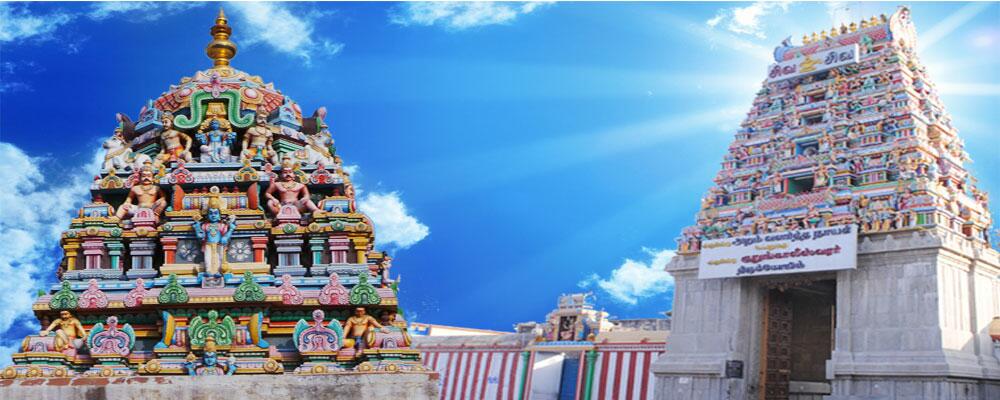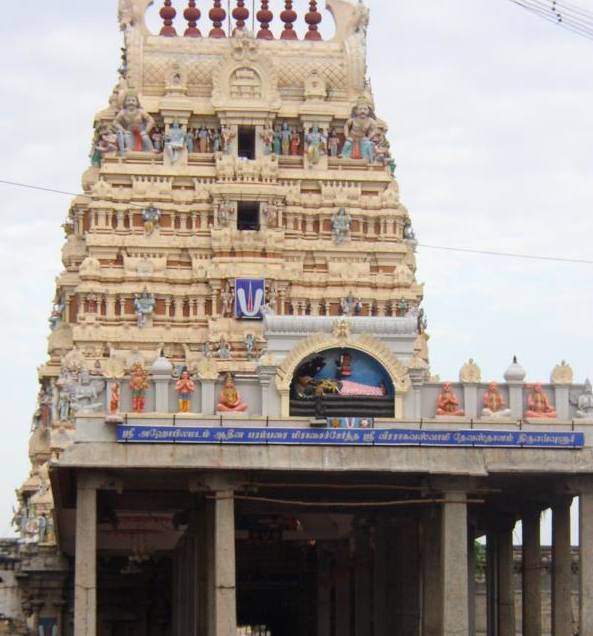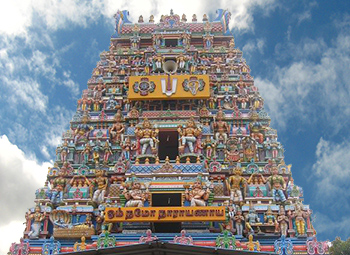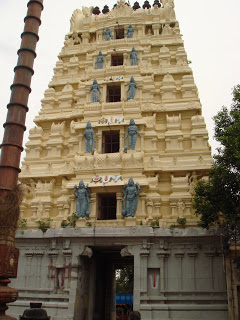Main God :
Arulmigu kurungaleeswarar & vaikundavasa perumal
.jpg)
Location :
Arulmigu kurungaleeswarar & vaikundavasa perumal Temple,
sivan koil street,
koyambedu.
chennai 600107
Festivals :
Chithirai :
Chithirai Festival begins with Flag Hoist and Car riding on the day of Hastha Nakshthra and ends in the day of Chithra Nakshathra with Holy bothing in the river at morning and dehoisting the flag the evening. During this Ten days of ceremony the Uthsavamoorthis (festive deities – Siva, Vishnu) will be taken out on different types of Vahanas for dharsan.

Aadi :
The 18th day of Aadi Tamil Month is the day for Holy both in river Kaviri. During this function the Uthsavamoorthi will be taken to the river bank and there will be a function called “Deepam” conducted by Thirukovil, at 6.00 P.M. The Last Friday of the Aadi Month is the day of making Decorations to all deities with sandal powder.
Aavani :
The Moola Nakshathra day of Aavani Tamil Month s a day of Siva, Peruman who blesses the living being at the river bank is called Pittu Thiruvizha. Rohini Nakshathra day of Aavani Month is the birthday of Lord Krishna and so called as “Krishna Jayanthi”. These festival is conducted for two days with the procession of Lord Krishna Festive deity.

Aipasi :
Aswini Nakshathra of Aipasi Tamil Month is the day of Annabishekam (Abishekam with cooked rice) to Lord Magudeshwara and Sasti Festival of six days duration which ends with the Soora Samhara. The Seventh day function is the Marriage Ceremony of Lord Muruga with Valli, Devasena.
Karthikai :
Krithika Nakshathra day of Karthigai Tamil Month is the day of “Karthikai Deepam” (Day of light). The last Monday of these month is the day for the “108 Sankabishekam” (conches filled with Kaviri water).
Markazhi :
Thiruvathirai Nakshatra day of Margazhi Tamil Month is the day for Lord Nataraja, Nataraja abishekam is a process of specialized pooja for the dancing Sivaperuman. Procession, Festive deities will be taken out for the public dharshan. The “Ekadhasi” is the day of entering in the Gateway to reach “Vaikuntham” (Heaven of Mahavshnu). This function is followed by the procession of “Uthsavamoorthis”.
 Thai :
Thai :
Pushpa Nakshathra of Thai Tamil Month is the day of “Theerthavizha”
Maasi :
Mahasivarathri is a grand saivaite festival to receive the bless and bliss from the Supreme Diving grace Sivaperuman.
Panguni :
Uthra Nakshathra day of this Panguni Tamil Month is the day of worshiping Lord Muruga.

Workship Timing :
MORNING 7.30 A.M TO 9.00 A.M
› BEFORE NOON 11.00 A.M TO 12.00 NOON
› EVENING 4.30 P.M TO 6.30 P.M
› 8.30 P.M TO 9.00 P.M
Vazhipadu Time :
› EVERY MORNING 4.30am – ko Pooja
› EVERY EVENING 8.30pm – palliarai pooja
Temple :
Koyambedu is situated at the north western side of Chennai. An ancient temple for Lord Shiva is located in Koyambedu where the main deity is Sri Kurungaaleeswarar and Goddess Sri Dharmasamvardhani (also called Aram Valartha Naayagi). sarabeswarar temple in chennai
Inscriptions which date back to Kulothunga Chozha III and Vijayanagara kings, informs about various contributions made to the temple. Inscriptions also reveal the political bifurcation of the place as Kulothunga Chozha Valanadu, part of Puliyur Kottam belonging to Jayankonda Chozha Mandalam. sarabeswarar temple in chennai
It is also said that the names of this place in ancient days were as Kosai Nagar, Koyattipuram and Prayachithapuram. Kulothunga Chozha is said to have ruled in the 12th Century and hence it is said that the temple was constructed during his period. sarabeswarar chennai sarabeswarar chennai sarabeswarar chennai
The main deity Sri Kurungaaleeswarar is also called as Sri Kusalavapureeswarar. It is said that Lava and Kusa, sons of Sri Rama stayed with Sage Valmiki in his Ashram along with their mother Sita Devi. chennai sarabeswarar
There are few other places too in and around Chennai like Thiruvaanmiyur and Siruvapuri, where Sage Valmiki had his Ashram when Lava and Kusa stayed with him. chennai sarabeswarar

The legend of this temple connects to Ramayana period, when Sita Devi was sent to forest by Sri Rama. Sita was under the care of Sage Sri Valmiki during that period and also gave birth to her 2 sons Lava and Kusa.sarabeswarar temple
When Sri Rama sent the Aswamedha horse around the country, Lava and Kusa brought the horse to their custody. Without knowing that it was His sons who captured the horse, Sri Rama sent Lakshmana who fought a battle with them. As Lava and Kusa fought against their own uncle, they acquired a Dhosham called Gothra Dhosham. To be relieved of it, it is said that, they installed and worshipped Lord Shiva in this place. sarabeswarar temple in tamilnadu
The presiding deity Sri Kurungaaleeswarar is too small as it was installed by two small kids. This wonderful temple has stood strong across centuries and still has not lost its originality. sarabeswarar temple in tamilnadu
There are beautiful stone pillared praakaarams around the sanctum. Another beautiful stone pillared Mandapam is found in front of the temple, in which Sri Sarabeswarar is seen on one of the pillars facing west. Special Poojas are performed to Sri Sarabeswarar on all Sundays during Raahu Kaalam. sarabeswarar temple in chennai
History :
After fourteen years of life in forest and winning Ravana in the battle, Sri Rama returned to Ayodhya and took charge of the kingdom. During that time, some idle men spoke ill of Mother Sita about her fidelity. Rama, bowing to gossips, sent sita to the woods where she gave birth to the twins Lava and Kuch in sage Valmiki’s ashram. The twin grew without knowing that Rama was their father. Rama performed an Ashwameda Yaga in Ayodhya. Lava and Kucha who came to participate in the yaga as directed by sage Valmiki returned back as it was against the rules of Vedas to perform a yagna without the wife by the side and also they learnt the truth that their mother Sita was sent to woods by Rama unjustly. The horse of the Ashwamedha Yaga came to the place where the brothers were living. Lava and Kucha caught the horse and bound it. Satrugna, the last brother of Lord Rama demanded the horse which the youth refused. They won their uncle Satrugna in battle and also Lakshmana who followed Satrugna. Sage Valmiki then explained the circumstances that compelled Rama to send Sita to the forests and said that Rama was none other a person than their own father.






